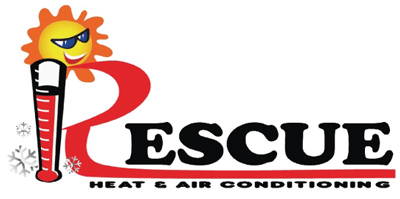
A furnace is usually a background player at home, keeping you warm in the cold winter months. It often won't be noticed until a malfunction appears.
One source could be that your furnace has a cracked heat exchanger. It can be a safety risk, so it’s worthwhile to know the evidence of a cracked heat exchanger and what you can do if you suspect that is the problem.
What Is a Heat Exchanger in a Furnace?
A heat exchanger helps transition heat from the combustion chamber of your furnace to the air that flows throughout the ventilation. It generally handles this using coils or tubes that warm the air while acting as a barrier to keep gas formed in the combustion chamber, called flue gasses, from escaping out into your home.
Is a Cracked Heat Exchanger Dangerous?
Thanks to its important role, it’s no surprise that a broken heat exchanger can be very dangerous. A crack in the heat exchanger can permit dangerous gasses – like carbon monoxide, which can be lethal – to be distributed across your home.
For obvious reasons, never run your furnace if you believe you're dealing with a cracked heat exchanger, as letting it run could make the entire family sick. Reach out to an HVAC professional as soon as possible if you are worried your heater has a cracked heat exchanger that needs repair.
Four Symptoms of a Cracked Heat Exchanger:
- Furnace shuts off: A crack in your heat exchanger may cause your furnace to turn off.
- Odd Smells: If the air leaving your furnace has an intense chemical odor, it could be an indicator that gas is seeping through cracks in your heat exchanger. These gasses, which will often smell like formaldehyde, are a significant warning sign.
- Carbon monoxide alarm is triggered or you feel health problems: If a cracked heat exchanger is releasing carbon monoxide into your home, your carbon monoxide alarm may go off or household members may struggle with signs of carbon monoxide poisoning. Side effects include headaches, dizziness, weakness, nausea, vomiting or feeling drowsy. If your alarm goes off or you feel unusually tired, leave the home immediately and then call for help.
- Soot: If you find black sooty accumulating on the exterior of your furnace, it’s an indication something may be seriously wrong.
What You Can Do if Your Furnace Heat Exchanger is Cracked
If you suspect your furnace has a cracked heat exchanger, call a pro with extensive experience in furnace installation Alice as soon as possible so they can examine your system and, if necessary, handle a furnace heat exchanger replacement. Costs should differ depending on the situation, but estimates run in the neighborhood of $1,000 to $3,000.
However, the good news is that heat exchangers are generally covered by the warranty. You should check the warranty paperwork on your furnace, as while the warranty might not cover the entire cost of repairs, it could significantly shrink your bill.
How to Prevent a Cracked Heat Exchanger in Your Home
One of the best ways to avoid problems in your furnace overall is via routine furnace maintenance. Furnaces provide the best possible return on investment when they work efficiently. Calling a trained professional to check your furnace for old parts, dirty filters and other potential problems can help you avoid getting a big bill later on.
It’s also a good idea to inspect your furnace filters every few months – it’s recommended some filters be changed every 90 days or sooner if they are dirty or grimy. While the filters aren't connected to the heat exchanger itself, the strain of dragging air through a clogged filter makes the entire furnace work harder to do its job. And the harder your furnace has to work, the more wear and tear parts like the heat exchanger will sustain.
